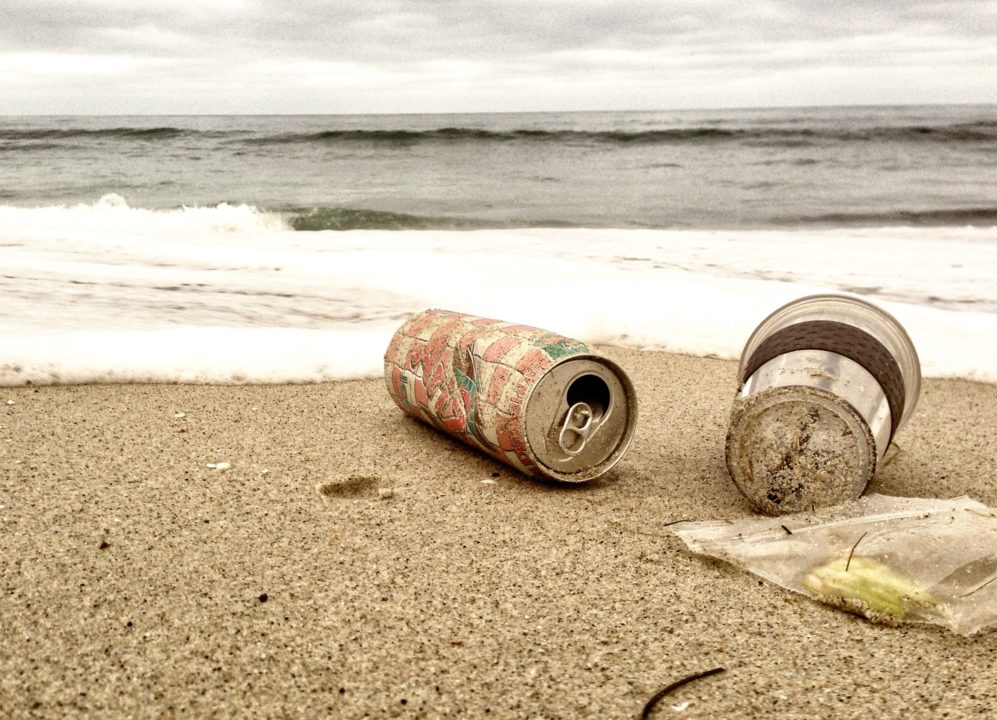Polluted water is huge issue for everyone. Plastics in our water affect the food supply, drinking water, the marine environment and our ability to enjoy the open water for recreational purposes. The sport of surfing has been a leader in creating awareness and it’s important the open water swimming community also embrace this issue. As more swimmers take to the open water every day it’s imperative we take collective measures to combate the problem. This press release includes some simple things you can do today.
What are you doing to keep your local water clean?
Thanks to Ginny Grimsley for sharing this press release to us here at SwimSwam.
Epic Conditions in the Pacific
Actually Making Surfers Gag
Gnarly Vortex of Gunk Documented by Ocean Advocate,
Who Offers 5 Tips to Reduce Plastic Consumption
Winter is the time of year that can make even the most rad wave-shredders think twice, with monster swells on Hawaii’s North Shore and along the West Coast of the U.S. mainland. But now, there’s another issue giving pause to hotdoggers and saltys of all stripes – and it’s a year-round problem.
“I remember the first time I felt it; I was paddling out on my board and noticed a mushy, plastic-like substance sliding through my fingers, and that’s what started my obsession with the Great Pacific Garbage Patch,” says charity fundraiser Veronica Grey, known as the Surf Lady to friends and acquaintances. “The patch is located between Hawaii and California in the northern Pacific Ocean, where millions of small bits of plastic have gathered in a vortex of ocean currents known as a gyre.”
As someone with ample experience raising awareness for worthy causes, Grey paired her professional skills with her personal passion for the ocean, creating the award-winning documentary “Aqua Seafoam Shame,” (www.Pacific-TV.com), which spotlights the mess in the ocean that has garnered precious little media attention, she says.
“Fifteen years ago The Patch was the size Texas, but now it’s the size of the continental United States,” says Grey, who used her iPhone to shoot the documentary, which features renowned scientists, journalists, wave riders and environmentalists.
Plastic in the ocean has far-reaching implications that, if not addressed within 20 years, could change life on this planet, she says. To date, 177 species of sea life are known to ingest plastic; other species feed on those creatures, extending the chain of damage.
“People eat the seafood that eats plastic, and the planet gets its rain from the oceans, which are being polluted at an exponential rate,” she says. “We use significantly more of our planet’s surface as a dump than for growing food; this has to change.”
To begin addressing plastics pollution, Grey encourages people to use alternatives:
• Americans buy 2 million bottles of water every five minutes; ditch plastic bottles and use glass or recyclable cans.
• Carry a cost-effective canvas bag instead getting disposable plastic bags at the grocery store. We waste 10 billion plastic bags every week!
• Do not line your trash cans with plastic bags. Use paper bags or nothing.
• Skip the lid on your to-go drinks. The paper cup is normally recyclable but the lid usually isn’t.
• Remember that each and every time you flush; it all ends up in the ocean. Be mindful of what you toss in your toilet!
About Veronica Grey
Veronica Grey is an award-winning author and filmmaker. A graduate of UCLA, she is a regular contributor to TV stations across the country and is the recipient of the 2011 New Media award from the Pare Lorentz Film Festival. “Aqua Seafoam Shame” is a critically acclaimed documentary that explores the diagnosis that 25 percent of our planet’s surface is now a landfill, due to the Pacific garbage patch and plastics. The movie also explores the process by which conscientious companies, some because of her encouragement, switched from plastic to a more sustainable alternative. Grey was born on PI (3.14) IN PI (Philippines Island) and she is recognized as a numbers savant.
